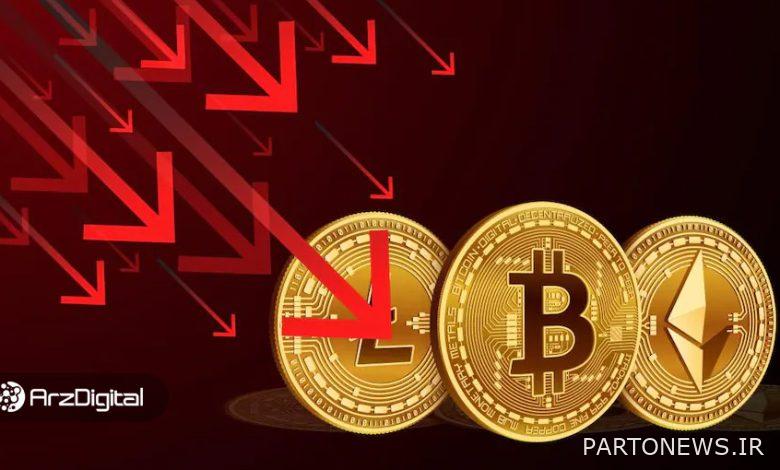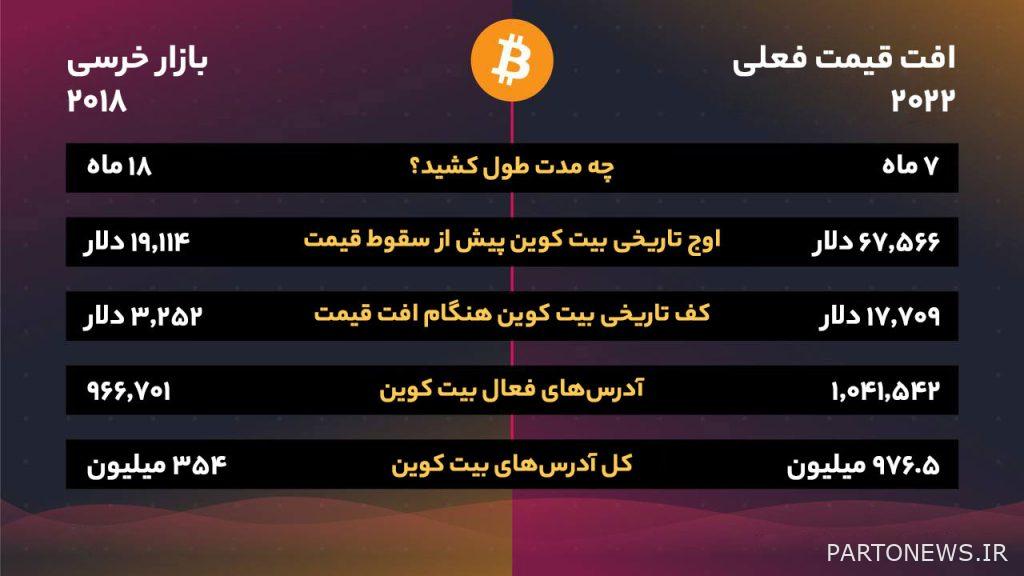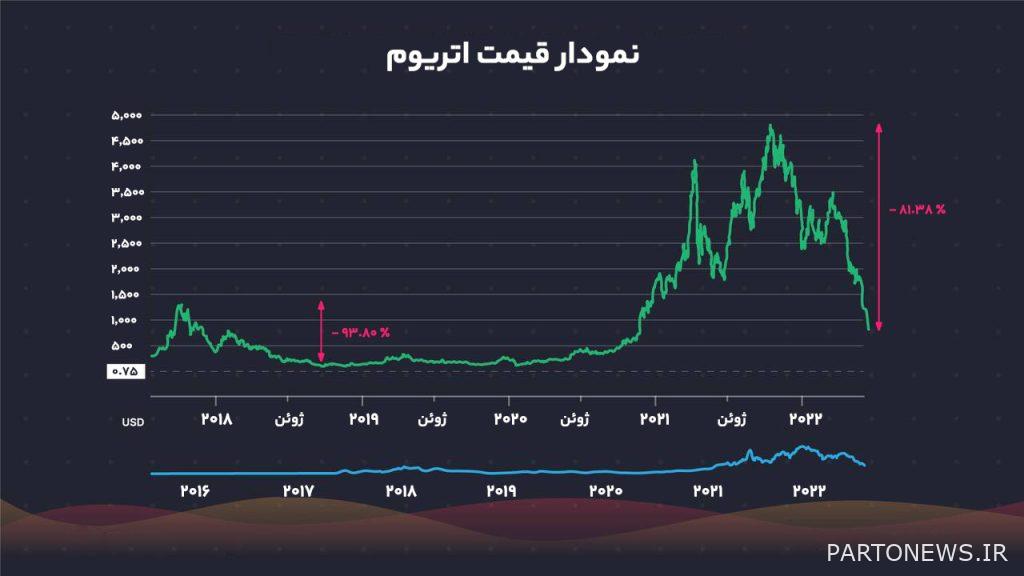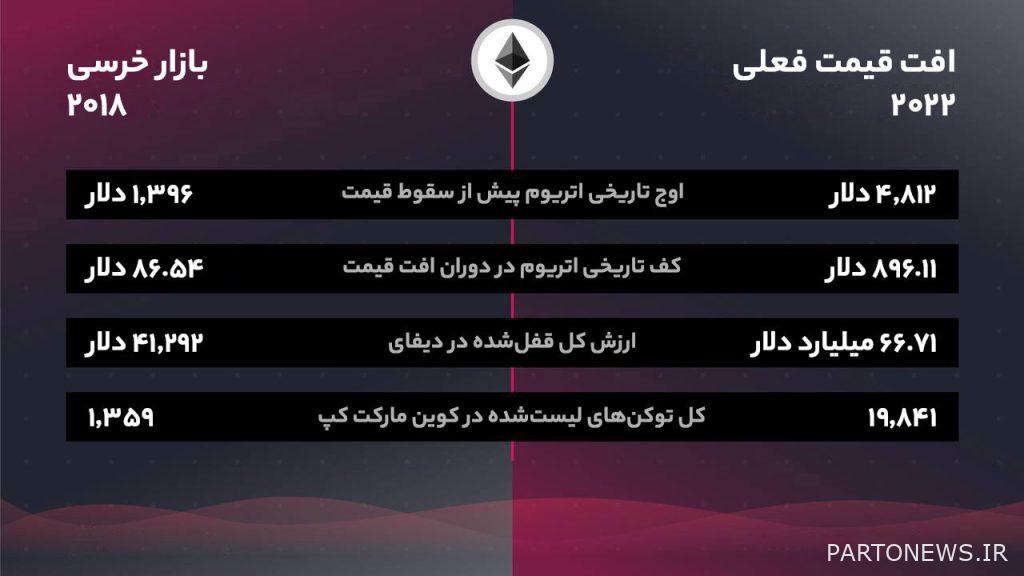The bearish market of 2022; Does history repeat itself?

In the last 7 months, the digital currency market and the stock market and the global economy in general have experienced a significant drop; A decline that has led to problems such as high inflation, interest rate increases, food supply chain crisis, energy crisis and instability. The set of these problems is considered a powerful blow for any high-risk market, including the stock market and digital currencies, and forces small and institutional investors to withdraw their capital from the market in such uncertain conditions.
With the current price of Bitcoin, which has fallen by 65% compared to the historical peak of $68,000, as well as a 70% fall in the value of the entire altcoin market, it cannot be denied that another bear market has entered. However, in the meantime, this important question is raised: will the bear market of 4 years ago be repeated again for digital currencies?
In this article, we outline the state of the bear market in 2018 and 2022 to find out if the current situation is really different from the past 4 years or if such fluctuations are just a small change in the fast-moving upward trend. Also, we talk about when to start the next bull cycle and how to make money in a bear market; So stay with us until the end of this content.
2018 bear market
In 2017, we saw the first massive influx of micro-transactions into the digital currency space. At that time, the price of Bitcoin experienced a rapid rise and reached an all-time high of $19,100. Following that, many people launched their ICOs with the aim of attracting capital. Ordinary word companies Blockchain added to their names to increase the price of their shares. 2017 was a year of chaos and chaos; Because there were less rules compared to the current era and the space was full of opportunists looking to make money out of the pockets of unsuspecting investors who were investing in digital currencies for the first time.
Read more: What is an Initial Coin Offering (ICO)?
However, the digital currency market was extremely hot and investors were investing their money in everything without thinking and wanted to join this noisy flow with the lowest evaluation. With the arrival of 2018, the excitement disappeared and people began to feel pain. Less than six months after the peak of enthusiasm in ICOs, more than 90% of projects were stopped, and many other projects fell into a deep sleep in the remaining 18 months of this market. Between the end of 2018 and the middle of 2019, the price of Bitcoin fell by about 83% from its historical peak and fell to a price floor of $3,000.
At that point in time, a sense of fear, distrust, and doubt (FUD) entered the market. The fear of legislation due to the prevalence of fraud and the ban of digital currencies in China and South Korea were factors that did not look very good for the digital currency space. Just as the market was peaking, the Chicago Mercantile Exchange (CME) launched its Bitcoin futures product, which allowed institutional investors to trade Bitcoin.
While fear, mistrust and doubt prevailed over the situation at that time and the market was waiting for the pressure to decrease, institutions started selling in the market, which caused a sharp drop in the price of Bitcoin. This decrease continued until the middle of 2019. Ethereum also spent the 2018 bear market in much worse conditions compared to Bitcoin. During that period, the Ethereum price experienced a 93.8% decline, from its all-time high of $1,396 to a low of $86.54 between January and December 2018.
Bear market in 2022
After the corona pandemic, the market experienced a two-month recession. With the general quarantine, supply and demand decreased; But when central banks started printing money by issuing stimulus checks to help people and businesses, a lot of money became available to people and many people went to invest in digital currencies to spend their money.
After the fall in prices in March 2020 (March 2018), the other days of the year witnessed the boom of the digital asset market and this boom was called the “Summer of DeFi”. By the end of the year, the price of Bitcoin increased by 400% and after that, this upward trend continued.
Read more: What is DeFi or decentralized finance?
2021 was the year of Gentile tokens, Metaverse and Gamefay. These fields expanded rapidly with numerous projects and took part of the market value of digital assets.
After reaching the peak in November 2021 (Azer 1400), the digital currency market started a continuous downward trend. Those who had considered November as the time of peak prices realized that the market was going to undergo significant changes and inflation.
In the meantime, the only way for governments to curb this unbridled inflation, whose effects were evident in early and mid-2022, was to start quantitative tightening policies by increasing interest rates. Unfortunately, the denial of the beginning of the bear market in April caused many people’s capital to be in a situation that they may not be able to get it again soon.
However, the way forward seems clear. The strict monetary policy of the Federal Reserve in order to control inflation and increase interest rates has caused a lot of problems for the markets, which is necessary and unavoidable. With money printing at unprecedented levels since the start of Covid-19, it will be difficult for the Federal Reserve to reduce inflation without causing significant damage. As a result of this, along with the spread of inflation, there has been a significant recession, while people’s income has not changed and expenses are increasing.
By adjusting the price floors of Bitcoin in the bear market of 2018 and 2022, there is a possibility that this 18-month downward trend between 2018 and 2019 will continue for about 11 months in 2022.
Bitcoin price
Looking at the number of daily active Bitcoin users between the two peak prices of 2017 and 2021, it can be seen that this number has increased by about 10%. The number of daily active addresses has increased from 966,701 addresses in December 2021 (D1400) to 1.041 million addresses in April 2022 (Foradin 1401). In addition, the market value of Bitcoin has grown by 300% during the same period.
While the number of daily active user addresses has increased by about 10% between the two historical peaks, the total number of Bitcoin addresses has nearly tripled from 354 million to 976 million over the same time period. This increase in the number of active addresses and the total number of Bitcoin addresses has helped in the current market cycle, acceptance and transaction on the network on a wider level compared to 2017.

Currently, the average daily trading volume of Bitcoin is close to 5-6 billion dollars, while in 2017, this figure was around 0.8-0.9 billion dollars.
Ethereum price
If we want to compare, the current price of Ethereum has decreased by about 64% compared to its historical peak in 2021.

It should be noted that the price of Ethereum has increased by about 244% between its two historical peaks in 2018 and 2021, and at the same time, the total value locked (TVL) in Defa, which has the most activity on the Ethereum network, has increased with the launch of programs such as UniSwap, Compound , Synthetics and Yren Finance reached 66.7 billion dollars and was able to experience the peak of 184.5 billion dollars. Not to mention, the total number of tokens listed on a website like CoinMarketCap has also exceeded 1,359 tokens and reached around 20,000 tokens.

If we match the decrease in the price of Ethereum with its 93.8% decrease in the bear market of 2018, its price can decrease to about $300 in the most pessimistic case! Of course, this requires another 67% reduction compared to the price floor in the recent bear market, which does not seem likely.
When will the next bull cycle begin?
Currently, there are no clear signs that central banks have scaled back tight monetary policies. It may take several months for things to return to normal. Once the Fed eases monetary constraints, we can prepare for the next bull cycle.
Two parameters, “Increase of Bitcoin tradable funds on the stock exchange (ETFs)” and “Etherum Merge update” which causes the Ethereum network to change from the widely used Proof-of-Work mechanism to the Proof-of-Stake mechanism. ) is transferred, they can promise the beginning of an upward trend in the market. Of course, we should not forget that other events such as the end of the war in Ukraine, changes in the monetary policies of the Federal Reserve, the legalization of digital currencies and the acceptance of more countries from these assets can accelerate the formation of the next bull market.
Read more: All about Bitcoin ETFs in plain language
How to make money in a bear market?
There are always great opportunities in difficult situations, and this bear market is no exception. This is the time to learn and buy at cheap prices and pay more attention to the market. In this section, we review strategies that you, as an investor, can use to maximize your profits until the next uptrend arrives.
1. Dollar cost averaging (DCA) in investments: Instead of trying to find price floors and investing the entire asset in one step, it is better to invest 20% of your capital over a longer period of time. Thus, it is more likely that you will get a more favorable average entry price and profit from this method.
2. Do enough research: Fundamental analysis of projects is the best way to ensure that you are investing in platforms that have real potential, and now is the time to do it. Many projects are lost during a bear market; Therefore, it is important to obtain reliable and documented information and judge everything accurately so that you have a strong position in the next bull market.
3. Diversifying the investment portfolio: As we have seen in the past months, failure and loss of capital in the digital currency space can be very painful. Instead of investing in one project, spreading the risk and investing in several different projects ensures that your capital is safer.
4. Shorting in the market: In general, people with no trading experience should not use this method; Because without proper risk management and sufficient familiarity with price chart trends, everything can quickly fall apart. During a downtrend, one of the ways to make money in bear markets is to anticipate a decline in the value of an asset, or so-called shorting.
Note that the data mentioned in this article has been collected based on information from various sources, and at the same time, none of the methods mentioned in this article should be considered as investment or earning advice.
Conclusion
In the past few months, the world economy has witnessed various problems such as high inflation, rising interest rates, supply chain issues and energy crisis. The set of these problems can hit any high-risk market such as stocks and digital currency and force investors to withdraw their capital from the markets. Considering the current price of Bitcoin, which has decreased by 70% compared to its historical peak of $69,000, as well as the decrease in the value of the entire altcoin market, it cannot be denied that it has entered a bearish market.
After peaking in November 2021, the digital currency market has been in a continuous downtrend. Some have rightly realized that inflation is out of control and the only way for governments to curb it is to start a quantitative tightening policy by increasing interest rates. Unfortunately, many people denied the beginning of the bear market, which put many people in a situation where they may not be able to access their capital in the near future.
The strict monetary policy of the Federal Reserve in order to control inflation has created many problems for the markets, which is necessary and unavoidable. With money printing at an unprecedented rate since the start of Covid-19, it seems difficult for the Fed to reduce inflation without taking too much damage. As a result, simultaneously with the expansion of inflation and the increase in prices, recession is emerging; While people’s income has not changed and expenses are increasing.
For now, there are no clear signs that central banks have scaled back tight monetary policy, and it could be several months before things return to normal. Once the Fed eases monetary restrictions, we can prepare for the next bull cycle. Regardless of continued geopolitical turmoil, the next bull cycle is sure to come; But it is difficult to say what events can make the market hotter this time. The Bitcoin Instant Trading ETF and the Ethereum Marge update could be two important catalysts for the next bull market.
What is your view on the duration of the 2022 bear market? Given the current conditions, when do you think the next bull cycle will begin?

